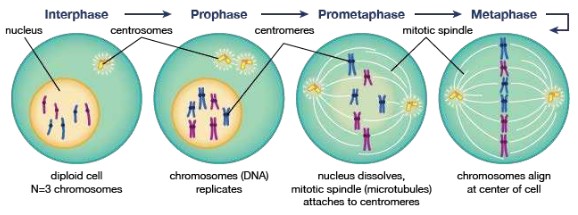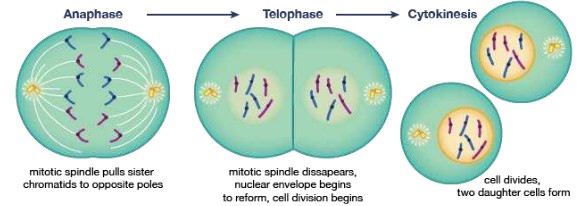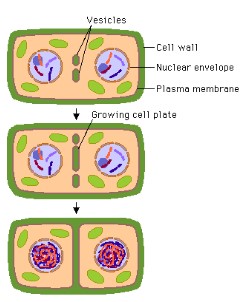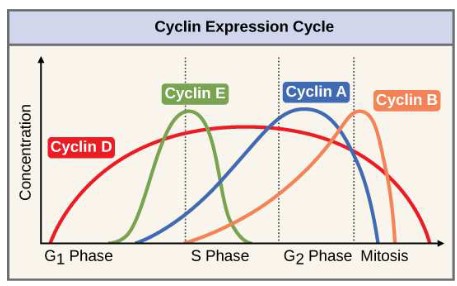Topic 1 Cell
1.6 Cell division
Cell cycle
- G1 phase: increase cytoplasm volume, organelle production and protein synthesis (normal growth)
- S phase: DNA replication
- G2 phase: increase cytoplasm volume, double the amount of organelle and protein synthesis (prepare for cell division)
- M phase: Mitosis
- Interphase: consists of the parts of the cell cycle that don’t involve cell division (G1,S and G2 phase)
- G0 phase: resting phase where the cell leaves the cell cycle and has stopped dividing. Cell carries out all normal functions without the need of dividing. e.g. brain cell

Prophase:
- DNA supercoil: chromatin condenses and becomes sister chromatids, which are visible under the light microscope.
- Nuclear membrane is broken down and disappeared.
- Centrosomes move to the opposite poles of the cell and spindle fibers begin to form.
Metaphase:
- Spindle fibers (microtubules) from each of the centrosomes attach to the centromere of sister chromatids.
- Chromatids line up in the equator.
Anaphase:
- Contraction of the spindle fibers cause the separation of the sister chromatids.
- The chromatids are now considered as chromosomes.
- Chromosomes move to opposite poles of the cell

Telophase:
- Chromosomes uncoil to become chromatin.
- Spindle fibers break down and new nuclear membrane reform at opposite pole.

Cytokinesis in animal cells:
- a cleavage furrow forms when the plasma membrane is pulled inwards around the equator by the contractile proteins actin and myosin
- Once the invagination reaches the centre the membrane pinches off and to new cells are formed
Cytokinesis in plant cells:
- In plant cells tubular structures are formed by vesicles along the equator of the cell
- This continues until two layers of membrane exist across the equator, which develop into the plasma membrane of the two new cells
- Vesicles bring pectin and other substances and deposit these between the two membranes through exocytosis forming the cell plate
- Cellulose is then brought and deposited by exocytosis between the membranes as well, forming the new cell walls

Cyclins:
- Cyclins are a family of proteins that control the progression of cells through the cell cycle.
- It is used to mark the checkpoints between two stages
- Cells cannot progress to the next stage of the cell cycle unless the specific cyclin reaches its threshold
- Cyclin binds to enzyme called cyclin-dependent kinases
- This enzyme then trigger the signal to move on to the next stage.

Mutagens and oncogenes:
- Tumors (cancer) are the result of uncontrolled cell division, which can occur in any organ or tissue.
- These abnormal growths can either be localized (primary tumours), meaning they do not move to other part of your body. These tumours are benign.
- If the cancer cells detach and move elsewhere into the body (secondary tumours), they are called malignant and are more life threatening
- Diseases due to malignant tumours are known as cancer
- Metastasis is the movement from a primary tumour to set up secondary tumours in other parts of the body
- Cancer is usually caused by genetic abnormalities due to a variety of different sources called carcinogens or due to inheritance or errors in DNA replication.
- Carcinogens are agents that can cause cancer, such as viruses, X-Rays, UV Radiation and many chemical agents
- Mutagens are agents that can cause mutations in one’s DNA which can lead to cancer
- In cancer two types of genes are usually affected, oncogenes and tumor suppressor genes.
- Oncogenes are genes that control cell cycle and cell division.
- Tumor suppressor genes usually control replication and the cell cycle. In cancer cells these genes are generally inactivated causing a loss of normal function.
